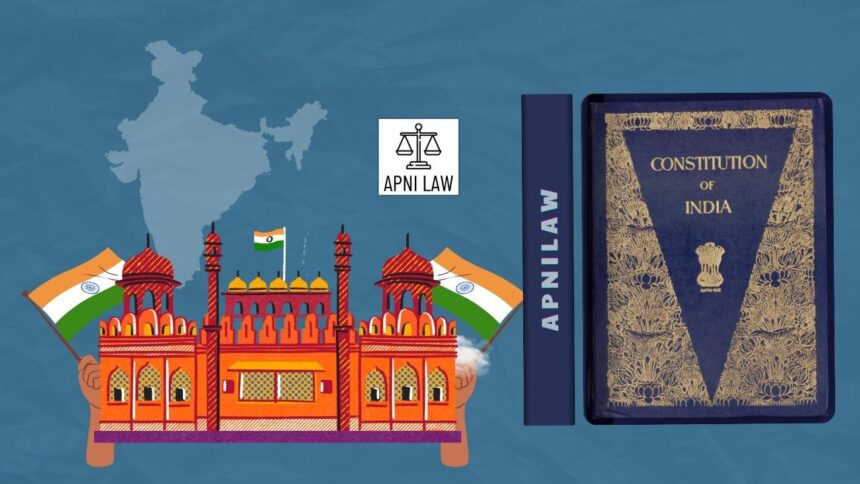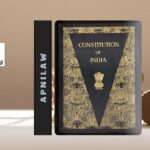Introduction
Article 12 of the Indian Constitution is one of the most fundamental provisions for the interpretation and application of Fundamental Rights. It forms the backbone of constitutional law by defining what the term “State” means under Part III of the Constitution. Why is this so important? Because the Fundamental Rights guaranteed under Articles 14 to 35 are primarily enforceable against the State. This means that for any violation of these rights, the first question that arises is whether the violator qualifies as “State” under Article 12. If yes, the person can approach the courts for enforcement under Articles 32 or 226. If not, then constitutional remedies may not apply. This makes Article 12 the starting point for every discussion on the applicability of Fundamental Rights.
Text of Article 12
Article 12 reads:
“In this Part, unless the context otherwise requires, the State includes the Government and Parliament of India, the Government and the Legislature of each of the States, and all local or other authorities within the territory of India or under the control of the Government of India.”
This definition is inclusive, meaning it does not limit the term “State” to only the listed authorities but also extends to other bodies performing public functions or under substantial government control. The framers of the Constitution deliberately kept the definition broad to ensure that the scope of Fundamental Rights remains extensive and capable of adapting to new governance models.
What Does “State” Mean in the Indian Constitution?
The term “State” in Article 12 refers to entities that exercise governmental powers or perform public functions. It includes both the Union Government and State Governments, their legislatures, local bodies like municipalities and panchayats, and other authorities. But what makes Article 12 significant is its inclusion of “other authorities.” This phrase has been subject to judicial interpretation for decades and has expanded the meaning of “State” beyond government departments to include statutory bodies, government-owned corporations, and even some private institutions under certain conditions.
Historical Context and Purpose of Article 12
When the framers of the Constitution drafted Article 12, their primary aim was to ensure that every authority wielding power over citizens remains accountable to constitutional principles. India had recently emerged from colonial rule, where unchecked governmental power led to widespread abuse. Therefore, the new Constitution sought to guarantee Fundamental Rights and ensure that any authority violating them could be challenged in court. The inclusion of “other authorities” was intended to cover any entity, even if not strictly governmental, that performs public functions or derives power from law.
Government and Parliament of India
The definition starts with the Government and Parliament of India. This clearly includes all organs of the Union Government, including the President, Prime Minister, Council of Ministers, and both Houses of Parliament. Any action taken by these authorities that violates Fundamental Rights can be challenged in the Supreme Court under Article 32. For example, if a law passed by Parliament infringes upon the right to equality under Article 14, the judiciary can strike it down as unconstitutional.
Government and Legislature of States
The term “State” also includes all State Governments and their legislatures. This means the Chief Minister, the State Council of Ministers, and the State Assemblies fall within the definition of the State. Any arbitrary action or discriminatory law passed at the state level can also be challenged as a violation of Fundamental Rights. The inclusion of both Union and State authorities ensures that the federal structure of India does not allow any level of government to act beyond constitutional limits.
Local Authorities and Their Role
Article 12 expressly mentions local authorities. These include municipal corporations, district boards, panchayats, and other bodies created for local governance. These bodies derive their powers from statutes and perform public functions such as sanitation, water supply, and town planning. Since they exercise statutory powers and impact citizens’ rights, they too fall under the definition of “State.” For instance, if a municipal body denies permission for a peaceful public meeting without proper justification, it could be challenged as a violation of the fundamental right to freedom under Article 19.
The Controversial Phrase: Other Authorities
The phrase “other authorities” in Article 12 has been the subject of extensive judicial interpretation. Initially, courts applied a narrow approach, limiting the term to authorities performing sovereign functions. However, later judgments expanded its scope significantly. In the case of Rajasthan Electricity Board v. Mohan Lal (1967), the Supreme Court held that statutory bodies created by law fall under Article 12. This marked a turning point in the interpretation of the term “other authorities.”
The landmark case of Ajay Hasia v. Khalid Mujib (1981) further widened this scope. The Court ruled that any authority that is financially, functionally, and administratively dominated by the government qualifies as the State under Article 12. This means that even government-funded educational institutions or public sector undertakings can be treated as State for the purpose of enforcing Fundamental Rights.
Tests for Determining “Other Authorities”
While there is no rigid formula, the courts have developed certain tests to determine whether an entity qualifies as the State under Article 12. These include the extent of government control, the nature of functions performed, and whether the body enjoys monopoly status due to state conferred powers. For example, if a private institution performs a public function such as running a university under government regulations and funding, it may be considered an authority under Article 12.
Why is Article 12 So Important?
The significance of Article 12 lies in its role as the gateway to enforcing Fundamental Rights. Most rights under Part III of the Constitution are enforceable only against the State. If an action by any entity does not fall under the definition of State, then constitutional remedies under Article 32 or Article 226 may not apply. This is why determining whether an entity qualifies as the State is the first step in any fundamental rights litigation. For example, if a public sector bank terminates an employee arbitrarily, the employee can invoke Article 14 only if the bank is considered the State under Article 12.
Recent Trends and Expanding Scope
Over the years, the judiciary has adopted a liberal approach in interpreting Article 12 to ensure that entities exercising significant public power do not escape accountability. Today, even private bodies discharging public duties may come under its scope. For instance, private educational institutions receiving substantial government aid and performing functions affecting fundamental rights have been held accountable under constitutional provisions.
Conclusion
Article 12 of the Indian Constitution is more than a definition; it is a powerful instrument that determines the applicability of Fundamental Rights. By keeping the definition of “State” broad and inclusive, the Constitution ensures that no authority exercising public power can act arbitrarily. Judicial interpretation has expanded its scope to include not only government departments but also statutory bodies, corporations, and even private entities under certain conditions. This evolution reflects the dynamic nature of Indian constitutional law and its commitment to protecting individual rights against all forms of power.
For any specific query call at +91 – 8569843472








